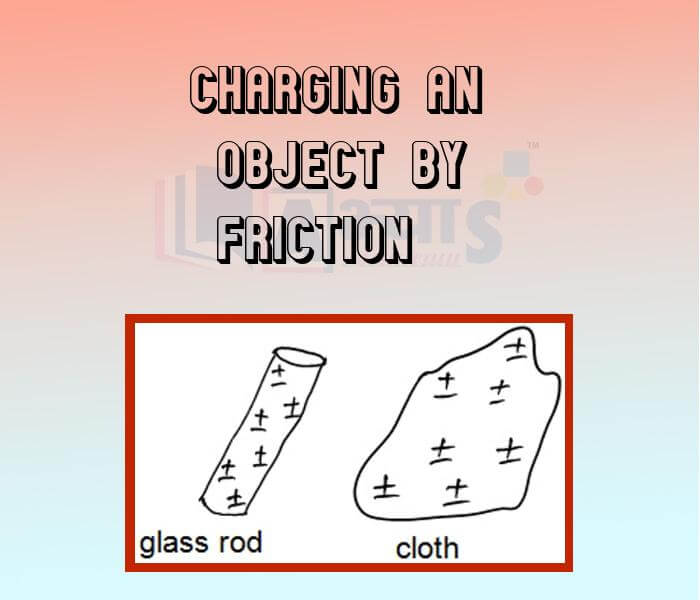Charging an object by Friction





Charging an object by Friction
Charging an Object: Atoms usually have equal number of positive and negative charges, and are, therefore, electrically neutral. This is the reason why most objects around us are electrically neutral. An electrically neutral object can be charged by using any of the following methods.
Charging by friction: This kind of charging is done by rubbing one material with another. This produces on equal and opposite charge in both the bodies. The most common examples are rubbing glass with silk, and ebonite (a kind of hard rubber) with wool.

Static electricity builds when two different non- metal materials rub together. Rubbing or friction makes the electrons move.This give one material a positive charge and other a negative charge.When glass rod is rubbed with silk, it aquires positive cahrge and by convention silk will aquire some amount of neagative charge. Similarly when plastic rod rubbed with fur it aquires negative sharge, and the fur itself is found to acquire a positive charge. Moreover , if the rod and fur are brought into contact with one another, the charge is found to disappear from both. Similar observations are true for the glass rod and silk cloth.
The tremendous electric charges in the atmosphere which produce sheet lightning in the clouds are produced by the process of __________________ | |||
| Right Option : D | |||
| View Explanation | |||
When a glass rod is rubbed with a piece of ilk cloth, then : | |||
| Right Option : B | |||
| View Explanation |
An inflated rubber balloon is rubbed with a woollen cloth whereas a ballpoint pen refill is rubbed with a polythene bag. Which of these will get positively charged?
| |||
| Right Option : B | |||
| View Explanation | |||
Students / Parents Reviews [10]
It was a good experience with Abhyas Academy. I even faced problems in starting but slowly and steadily overcomed. Especially reasoning classes helped me a lot.

Cheshta
10thMy experience with Abhyas academy is very good. I did not think that my every subject coming here will be so strong. The main thing is that the online tests had made me learn here more things.

Hiya Gupta
8thI have spent a wonderful time in Abhyas academy. It has made my reasoning more apt, English more stronger and Maths an interesting subject for me. It has given me a habbit of self studying

Yatharthi Sharma
10thAbhyas Methodology is very good. It is based on according to student and each child manages accordingly to its properly. Methodology has improved the abilities of students to shine them in future.

Manish Kumar
10thMy experience was very good with Abhyas academy. I am studying here from 6th class and I am satisfied by its results in my life. I improved a lot here ahead of school syllabus.

Ayan Ghosh
8thBeing a parent, I saw my daughter improvement in her studies by seeing a good result in all day to day compititive exam TMO, NSO, IEO etc and as well as studies. I have got a fruitful result from my daughter.

Prisha Gupta
8thOne of the best institutes to develope a child interest in studies.Provides SST and English knowledge also unlike other institutes. Teachers are co operative and friendly online tests andPPT develope practical knowledge also.

Aman Kumar Shrivastava
10thA marvelous experience with Abhyas. I am glad to share that my ward has achieved more than enough at the Ambala ABHYAS centre. Years have passed on and more and more he has gained. May the centre flourish and develop day by day by the grace of God.

Archit Segal
7thIt has a great methodology. Students here can get analysis to their test quickly.We can learn easily through PPTs and the testing methods are good. We know that where we have to practice

Barkha Arora
10thAbhyas is a complete education Institute. Here extreme care is taken by teacher with the help of regular exam. Extra classes also conducted by the institute, if the student is weak.
